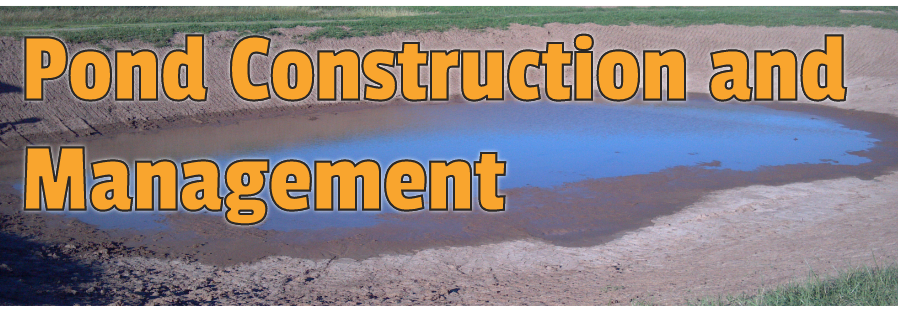Main Content

Fertilization
Not all ponds need fertilization. In general, if your water visibility (how far into the water you can see) is already less than 36 inches, fertilization may not be a good idea. Over-fertilization can lead to excessive planktonic algae blooms and can even encourage harmful blue-green algae blooms. Fertilization is appropriate for new ponds and for ponds presenting clear water with good alkalinity and hardness (>20 mg/L CaCO
3 for both). Fertilization can begin when the water temperature rises above 65ºF in the spring and should be stopped when the water drops back below 65ºF in the fall. It is best to use inorganic fertilizers in ponds because they are less likely to result in oxygen problems and their nutrient content is more definite and adjustable than organic fertilizers. Inorganic fertilizers come in powdered, granular and liquid forms. Powdered forms tend to be the easiest to apply by spreading directly into the pond. Granular fertilizers must not be allowed to sink to the bottom or their nutrients will be lost to the mud. Either pre-dissolve granular fertilizers, pour them onto a submerged platform, or cut the bags open and lay them on a submerged platform or at the pond edge so that waves will dissolve and disperse the fertilizer. Liquid fertilizers are concentrated and denser than water so they must be diluted before being applied. Read the product label for specific application instructions. General fertilization rates are below:
| Fertilizer Type |
Grade |
Water (Calcium) Hardness |
| Low (<50 mg/L) |
Moderate (>50 mg/L) |
| Liquid |
11-37-0
13-37-0
10-34-0
|
0.5 to 1 gal/acre |
1 to 2 gal/acre |
| Powder |
12-52-4
12-49-6
10-52-0
|
4 to 8 lbs/acre |
8 to 16 lbs/acre |
| Granular |
18-46-0
00-46-0
|
4 to 8 lbs/acre |
8 to 16 lbs/acre |
What to read next:
-
Feeding
Additional resources:
-
SRAC 0471 Fertilization of Fish Ponds